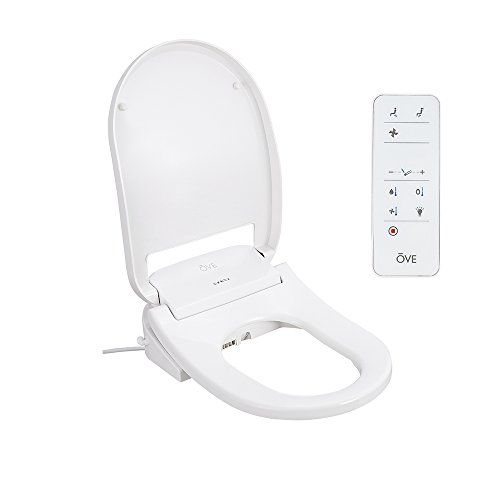How To Paint A Bathroom Ceiling of 2025
Are you tired of looking at a dull and outdated bathroom ceiling? It’s time to give it a fresh new look with a coat of paint. Painting your bathroom ceiling is a simple and cost-effective way to transform the entire space.
In this article, we will guide you through the step-by-step process of painting your bathroom ceiling, from gathering the necessary materials to cleaning up afterwards. You don’t need to be a professional painter to achieve great results – just follow our instructions and you’ll have a beautifully painted bathroom ceiling in no time.
So, grab your paintbrush and let’s get started on this weekend DIY project that will leave you with a bathroom you can be proud of.
Key Takeaways
- Inspect the ceiling for missed spots or touch-ups, and ensure consistent coverage
- Use appropriate tools (brush or roller) and follow paint can instructions for drying time
- Apply a second coat if necessary, ensuring even application and blending for a seamless finish
- Clean up any paint splatters or smudges, regularly remove dust and dirt, and maintain a clean bathroom ceiling for long-lasting beauty.
Gather Your Materials and Tools
Before you start painting, make sure you’ve got all the necessary materials and tools.
To paint a bathroom ceiling, you’ll need a few specific materials. First, gather a drop cloth or plastic sheeting to protect your bathroom floor and fixtures from any paint splatters.
You’ll also need a ladder that’s stable and tall enough to reach the ceiling comfortably. Don’t forget to have a paint roller and tray, as well as a high-quality paintbrush for any corners or edges.
For the paint itself, choose a high-quality, moisture-resistant paint that’s specifically designed for bathrooms.
In terms of tools, you’ll need a screwdriver to remove any light fixtures or vents from the ceiling, and a putty knife for any necessary patching or repairs.
Prepare the Ceiling Surface
First, make sure you’ve properly cleaned and sanded the surface to ensure a smooth and flawless finish.
To prepare the ceiling surface for painting, follow these steps:
-
Sanding and filling cracks: Use sandpaper to smooth out any rough areas and fill in any cracks or holes with a patching compound. This will create a seamless surface for the paint to adhere to.
-
Cleaning the surface: Remove any dust, dirt, or grease from the ceiling by wiping it down with a damp cloth or sponge. This will help the paint adhere better and prevent any imperfections from showing through.
-
Removing any existing wallpaper or paint: If there’s any wallpaper or old paint on the ceiling, it’s important to remove it before painting. Use a scraper or putty knife to gently peel off the wallpaper or scrape away the old paint.
-
Repairing any damage: If there are any areas of the ceiling that are damaged or have holes, use a patching compound to fill them in and smooth them out. This will ensure a professional-looking finish.
By properly preparing the ceiling surface, you’ll create the ideal canvas for your paint job and achieve a beautiful, long-lasting result.
Protect the Surrounding Areas
To ensure a clean and precise outcome, it’s essential to take measures in safeguarding the surrounding fixtures and furnishings during the painting process. Protective measures should be implemented to prevent any accidental splatters or spills that could damage the area around the bathroom ceiling. Start by removing any movable objects, such as shower curtains or light fixtures, from the workspace. Cover the floor with a drop cloth or plastic sheeting to catch any paint drips. Use painter’s tape to protect the edges of walls, windows, and cabinets. Additionally, it’s important to cover the bathroom fixtures, like the toilet, sink, and bathtub, with plastic or old bedsheets. By preparing the workspace properly, you’ll save time and effort in cleaning up afterwards.
Apply a Primer
Make sure you’ve got the perfect base for your masterpiece by applying a primer – it’s the secret to achieving a flawless finish that will leave you feeling proud and accomplished.
When it comes to painting a bathroom ceiling, using a primer is crucial for several reasons. Firstly, it helps to seal any existing stains or discolorations, ensuring that they won’t bleed through your fresh coat of paint. Additionally, primers create a smooth and even surface, allowing the paint to adhere better and preventing any peeling or cracking in the future.
When choosing a primer for your bathroom ceiling, opt for one that is specifically designed for high-moisture environments, as the bathroom tends to be a more humid area. Look for a primer that is mold and mildew resistant to protect against any potential growth.
Remember, a good primer is the key to a long-lasting and beautiful bathroom ceiling.
Choose Your Paint Color and Type
Now comes the fun part – picking the perfect color and type of paint for your bathroom ceiling! When choosing the paint color, consider the overall style and color scheme of your bathroom. Lighter colors like white, cream, or pale blue can make the space feel larger and brighter, while darker colors can create a cozy and dramatic atmosphere.
As for the type of paint, opt for a moisture-resistant and mold-resistant formula specifically designed for bathrooms. Look for paints labeled as ‘bathroom paint’ or ‘bathroom ceiling paint’ to ensure they can withstand the humidity and moisture present in the bathroom. Additionally, consider the finish of the paint. A satin or semi-gloss finish is recommended for bathroom ceilings as it’s easier to clean and more resistant to moisture and mildew.
Apply the First Coat of Paint
To apply the first coat of paint on your bathroom ceiling, start by using a roller for the larger areas. This will allow you to cover a larger surface area quickly and efficiently. Then, switch to a brush for the edges and corners to ensure precise and clean lines.
Use a Roller for Large Areas
Get ready to tackle those large areas by using a roller to paint your bathroom ceiling. Here are some tips and techniques for using a roller effectively:
-
Choose the right roller size: Consider the size of your bathroom ceiling and the amount of paint you need to cover it. A larger roller will cover more surface area, while a smaller roller may be better for more detailed work.
-
Consider the nap length: The nap length refers to the thickness of the roller cover. A longer nap is ideal for textured ceilings, as it can reach into crevices and provide better coverage. For smooth ceilings, a shorter nap will suffice.
-
Load the roller evenly: Dip the roller into the paint tray and roll it back and forth to evenly distribute the paint. Avoid overloading the roller, as this can lead to drips and uneven coverage.
-
Paint in a ‘W’ or ‘M’ pattern: Start at one corner of the ceiling and use long, overlapping strokes in a ‘W’ or ‘M’ pattern. This will help to evenly distribute the paint and avoid streaks.
By following these tips and techniques, you can achieve a beautifully painted bathroom ceiling using a roller.
Use a Brush for Edges and Corners
When tackling those hard-to-reach areas, you’ll want to grab a brush to effortlessly add precise details and corners to your stunning painting project. While a roller is great for covering large areas quickly, a brush allows for more control and accuracy. It’s important to choose the right brush for the job, such as a small angled brush or a sash brush with a tapered edge. These brushes are specifically designed for painting corners and edges, ensuring a clean and professional finish. Additionally, using a brush allows you to employ alternative painting techniques, such as stippling or feathering, to create unique textures and effects. So don’t overlook the power of a brush when painting your bathroom ceiling – it’s the key to achieving those perfect corners and adding artistic flair to your project.
| Advantages of Using a Brush for Corners | Tips for Brush Painting |
|---|---|
| Provides precise details and corners | Choose the right brush |
| Allows for more control and accuracy | Use small angled brush |
| Creates unique textures and effects | Employ alternative techniques |
| Gives a clean and professional finish | Practice on a test surface |
| Adds artistic flair to your project | Be patient and take your time |
Allow the First Coat to Dry
Once the first coat has dried, you can assess whether any touch-ups or additional coats are needed for a flawless bathroom ceiling. Here are some discussion ideas to consider:
-
Drying time considerations: It’s important to wait for the first coat to dry completely before proceeding. The drying time can vary depending on the type of paint used and the humidity levels in your bathroom. Follow the instructions on the paint can for the recommended drying time.
-
Techniques for achieving an even coat: To ensure a smooth and even finish, use long and even strokes when applying the paint. Start from one corner and work your way across the ceiling in a consistent pattern. Avoid going over the same area multiple times as it can result in uneven coverage.
-
Check for any missed spots or uneven areas: Once the first coat is dry, inspect the ceiling for any missed spots or areas that need touch-ups. Use a brush or a roller to apply additional coats to these areas, making sure to blend them seamlessly with the rest of the ceiling.
-
Allow sufficient drying time between coats: If you decide to apply additional coats, make sure to allow sufficient drying time between each coat. This’ll prevent the paint from becoming tacky or smudging. Follow the instructions on the paint can for the recommended drying time between coats.
By following these tips, you can achieve a beautifully painted bathroom ceiling.
Apply a Second Coat (if necessary)
Assess the coverage of the first coat by examining the ceiling for any areas that may require additional paint. Look for any uneven spots or areas where the paint may have dried too thin.
If necessary, apply a second coat evenly, making sure to cover any missed areas and maintain a consistent finish. Remember to allow the first coat to dry completely before applying the second coat for best results.
Assess the Coverage of the First Coat
Make sure you take a moment to admire the transformation after applying the first coat, you’ll be amazed at how much brighter and fresher your bathroom looks!
Now, it’s time to assess the coverage of the first coat and ensure that you achieve a uniform color throughout the ceiling. Here are three simple steps to help you with this process:
-
Inspect the ceiling: Carefully examine the entire surface to check for any missed spots or uneven coverage. Look out for areas where the original color is still visible.
-
Touch-up as needed: If you find any areas that require additional coverage, use a small paintbrush or roller to touch-up those spots. Make sure to blend the touch-up paint with the surrounding area to achieve a seamless finish.
-
Allow drying time: Once you have made any necessary touch-ups, allow the paint to dry completely. This will give you a final and accurate representation of the coverage and color before deciding if a second coat is required.
By following these steps, you can ensure that your bathroom ceiling has a beautifully uniform color and a professional finish.
Apply the Second Coat Evenly
Now it’s time to evenly apply the second coat and watch your space come to life with a flawless finish! When applying the second coat, there are some tips and tricks to keep in mind.
Firstly, make sure to use smooth and even strokes with your paintbrush or roller. This’ll help to avoid any streaks or uneven patches.
Secondly, be mindful of the amount of paint you’re applying. It’s better to start with a thinner coat and gradually build up if needed. This’ll prevent drips and excess paint from ruining your hard work.
Additionally, be sure to overlap the edges of the first coat slightly to ensure complete coverage.
Lastly, avoid going over the same area too many times as this can cause the paint to become uneven.
By following these simple tips and avoiding common mistakes, you’ll achieve a beautifully painted bathroom ceiling.
Clean Up and Enjoy Your Newly Painted Bathroom Ceiling
To fully appreciate your newly painted bathroom ceiling, take a moment to tidy up and relish in the fresh, clean atmosphere. Here are some cleaning and maintenance tips to keep your bathroom ceiling looking pristine:
-
Start by removing any drop cloths or protective coverings from the floor and furniture.
-
Use a damp cloth or sponge to wipe away any paint splatters or smudges from the walls or fixtures.
-
Inspect the ceiling for any dust or dirt that may have accumulated during the painting process. Use a duster or vacuum to remove any debris.
-
Pay special attention to any corners or edges where dust tends to accumulate.
-
Finally, step back and admire your newly painted bathroom ceiling. Breathe in the fresh air and enjoy the sense of accomplishment.
Taking these simple steps will ensure that your bathroom ceiling remains beautiful and clean for years to come.
Frequently Asked Questions
How long does it typically take for the first coat of paint to dry on a bathroom ceiling?
Typically, the first coat of paint on a bathroom ceiling takes around 2-4 hours to dry, depending on the paint type. Ensure proper ventilation to speed up the drying process.
Can I use regular interior paint for my bathroom ceiling, or do I need a specific type of paint?
You should use a specific type of paint for your bathroom ceiling. Look for bathroom ceiling paint options that are moisture-resistant and mold-resistant for better durability. Here are some tips for a smooth bathroom ceiling paint finish.
What is the best type of primer to use on a bathroom ceiling?
For the best results on your bathroom ceiling, use a high-quality primer like Zinsser or Kilz. These brands are known for their excellent adhesion and stain-blocking properties. However, if you’re looking for alternative options, consider using a paint and primer in one.
Should I remove the light fixtures and ceiling fan before painting the bathroom ceiling?
Remove light fixtures and ceiling fan before painting the bathroom ceiling. This ensures easier access and prevents accidental paint splatters. Take ventilation precautions by opening windows or using fans to minimize fumes.
Are there any specific safety precautions I should take when painting a bathroom ceiling, such as wearing a mask or ventilating the area?
When painting a bathroom ceiling, it’s important to take safety precautions. Wear a mask to protect yourself from fumes and ventilate the area by opening windows or using fans to ensure proper air circulation.
Conclusion
In conclusion, painting a bathroom ceiling can be a simple and rewarding project. By following these steps and gathering the necessary materials, you can transform your bathroom and give it a fresh new look.
Remember to prepare the surface, protect surrounding areas, apply a primer, and choose the right paint color and type. With a first and second coat, your bathroom ceiling will look brand new.










.jpg)








